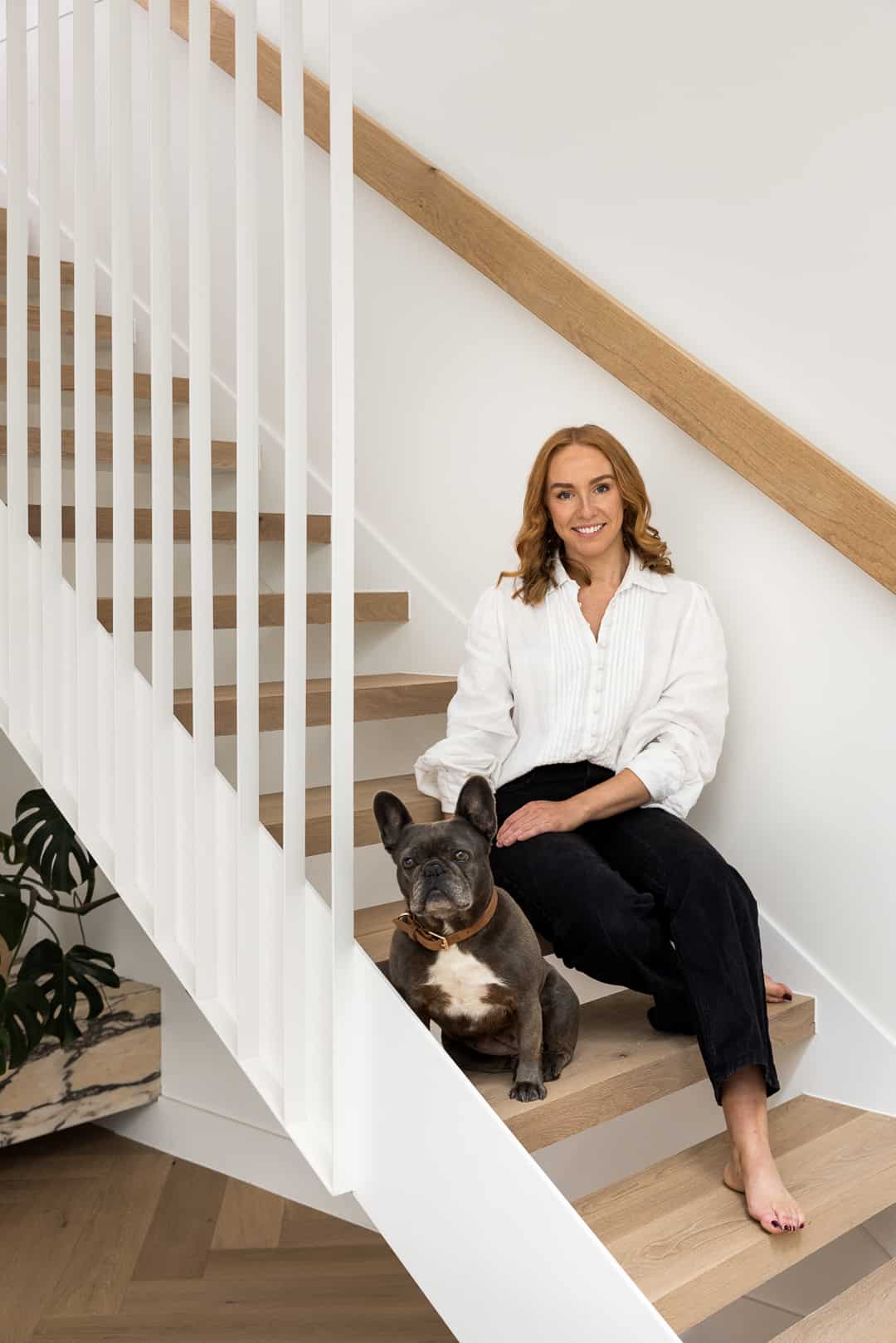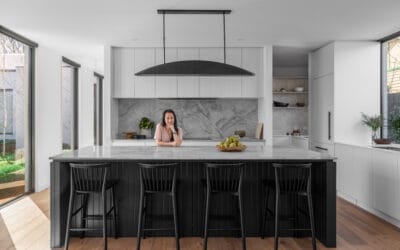Meet Elise Weavers, one of our developers who has successfully completed her own home as an owner builder. Discover how she and her partner Sam transformed their Ascot Vale residence from a dream into reality. The process, while rewarding, comes with its own set of challenges, one of the most significant challenges was time and spending around three years living in a renovation project.
As a homeowner with limited funds, Elise’s approach was practical. She initially had a modest budget for cosmetic renovations. These smaller projects allowed her to improve her home while saving for more extensive renovations. This step-by-step approach made it possible for her to gradually create her dream space.
Elise and her partner, Sam, didn’t have the immediate resources to tackle a large-scale renovation. Instead, they decided to stagger their projects over time. By completing smaller projects first, they could manage their budget and build equity. Once they had made significant progress, they were able to have their home revalued and refinance it to fund their larger renovation plans.
This strategy works with the owner builder method and conceptually that home improvement is a journey, not a sprint to the finish line. Like many people, Elise aimed to increase the value of their property and achieve their dream home step by step – she un-surprisingly didn’t start with a limitless bucket on money to draw on. Elise focused on curb appeal and areas that don’t require permits before embarking on major renovations, which may help to increase the value of your property and make it more livable in the short term, give you an immediate sense of achievement and provide that heartwarming feeling when returning home.
The beauty of the owner-builder approach is the ability to overlap cosmetic renovations that don’t require permits with planning and permitting processes for significant changes. This way, you can continually improve your living space while navigating the complexities of larger projects.
By approaching her dream home in stages she was able to manage her budget wisely and create impact, while planning for the ultimate renovation.
Elise’s Exceptional Background
Elise comes to the world of owner-building with a rich background in commercial construction and project management. Her working experience in construction gave her with invaluable skills and knowledge that she was able to draw on while she was renovating her home.
Elise understood the process of managing permits and documentation on a commercial scale, and although different she was able to understand and apply these project management skills to her project at home. This expertise provided a significant advantage to her owner-builder journey, where handling paperwork and approvals is a crucial part of the process. We would not recommend running an Owner Builder process if you are completely new to renovations, have no construction experience and the project is substantial. The process required you to take on the role and liability of a registered builder and if you miss a step or don’t understand how to comply with some of the codes it can lead to costly mistakes and issues that are hard to rectify.
Elise and her partner Sam were able to work together but manage different roles throughout the build. Elise’s past role working for an architect specialising in unit developments provided her with insight into the design and approval processes. Her partner Sam, is an experienced carpenter in residential construction, so provided complementary skills. Sam’s hands-on experience and knowledge of construction code and the intricacies of a build was a massive asset in actually building the home, managing the site and coordinating the trades.
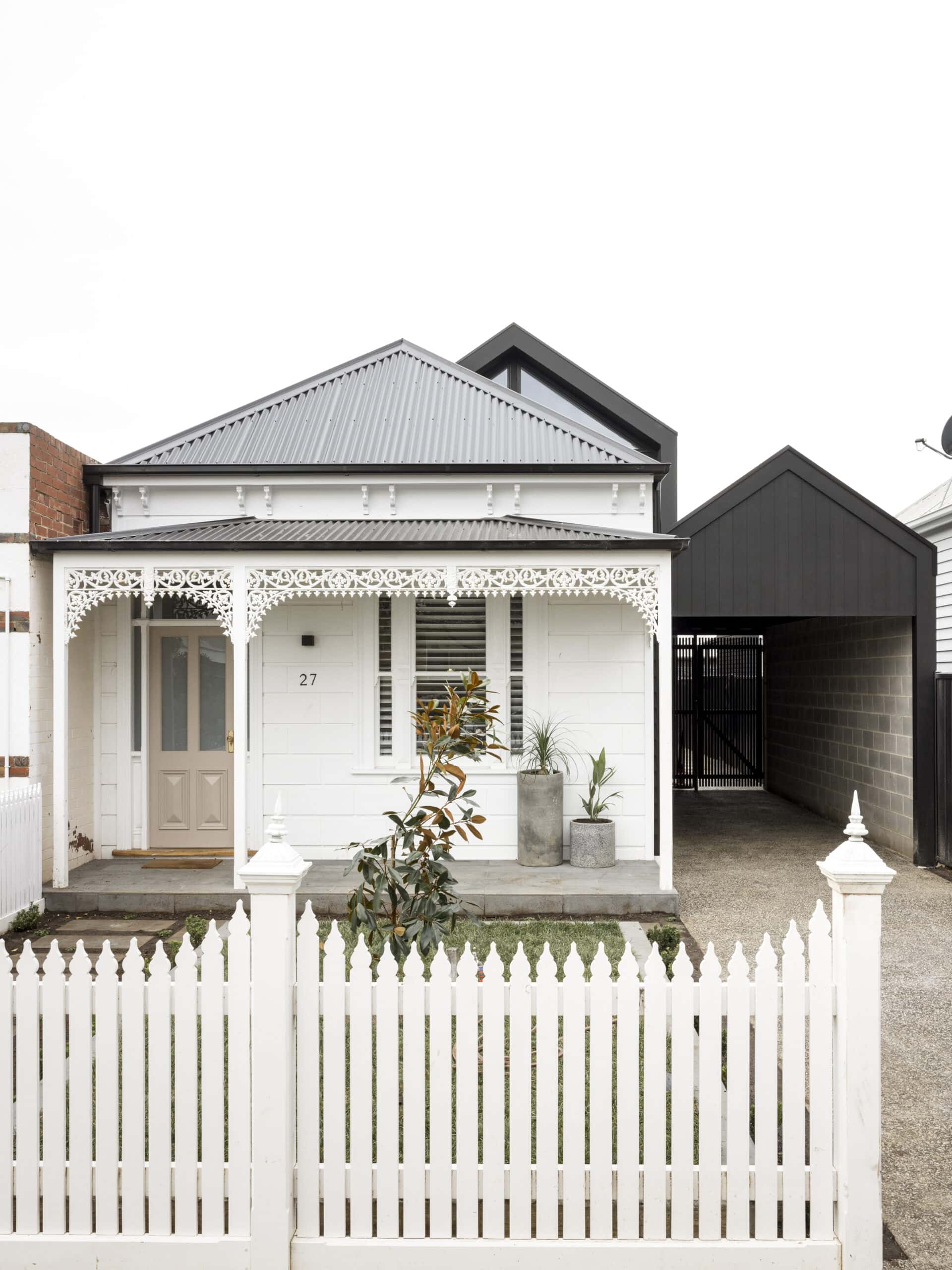

Navigating the Owner-Builder Process
Elise’s owner-building journey had its fair share of hurdles. One of the most significant challenges was obtaining the building permit. The process was more challenging than she expected, and she felt a lack of support from her consultants and the building surveyor, which she attributes to being an owner-builder. We have seen recently that many consultants are not wanting to work closely with Owner Builders where they feel they lack knowledge.
Elise’s experience in commercial construction was one where the architects, drafters, building surveyors, and engineers often worked together seamlessly. However, her experience residentially and as an owner-builder was one where the support and communication were not as smooth as she would have liked, which made the process challenging.
In commercial construction, there’s usually a clear chain of command, with the client’s satisfaction being a top priority. In residential construction, the dynamics are different, which can lead to varying levels of support and ultimately delays.
When they initially engaged a building surveyor, the fees were reasonable. However, when they transitioned to an owner-builder registration, the fees skyrocketed. This was unexpected and not budgeted for.
The higher fees for owner-builders could be partly due to the additional liability they carry, which is similar to a licensed builder. Owner-builders may also need more inspections and guidance, which results in added administration work for the building surveyors.
The concept of owner-building allows everyday people to make improvements to their properties without the need to hire a builder. However, the process is onerous to ensure that unskilled individuals do not compromise safety and compliance. The balance between liability and opportunity is crucial in the owner-builder system. For example in Victoria the Victorian Building Authority (VBA) allows owner-builder permits upon application and with consent to give property owners the opportunity to make improvements without excessive costs, this process has evolved over time to make the requirements more clear for home-owners.
Staging the Build
One of the most critical aspects of Elise and Sam’s owner-building success was unlocking the equity in their property. When they had their house revalued, it provided them with the opportunity to withdraw a lump sum that matched the budget for their renovation. This strategic move allowed them to have the necessary funds at their disposal.
Through her developer course, she learned how to assess finance after revaluing her property after completing cosmetic renovations allowing Elise and Sam to get an equity release after an official valuation.
Traditional lenders are generally hesitant to provide loans to owner-builders due to the complexities involved and they will want to closely monitor the construction progress and invoice payments, which can be cumbersome for owner-builders. Equity release, where you can re-draw the value you’ve created in your property, is often a smoother and more manageable option. It eliminates the need for extensive bank scrutiny and mandatory checks during the construction process. We would recommend speaking to a loan broker to confirm your options before you begin your build.
Elise and Sam had a finite amount of money they could access to complete their build after they had refinanced so they took a proactive approach by ensuring their budget was accurate and all their quotes were lined up before they began their project.
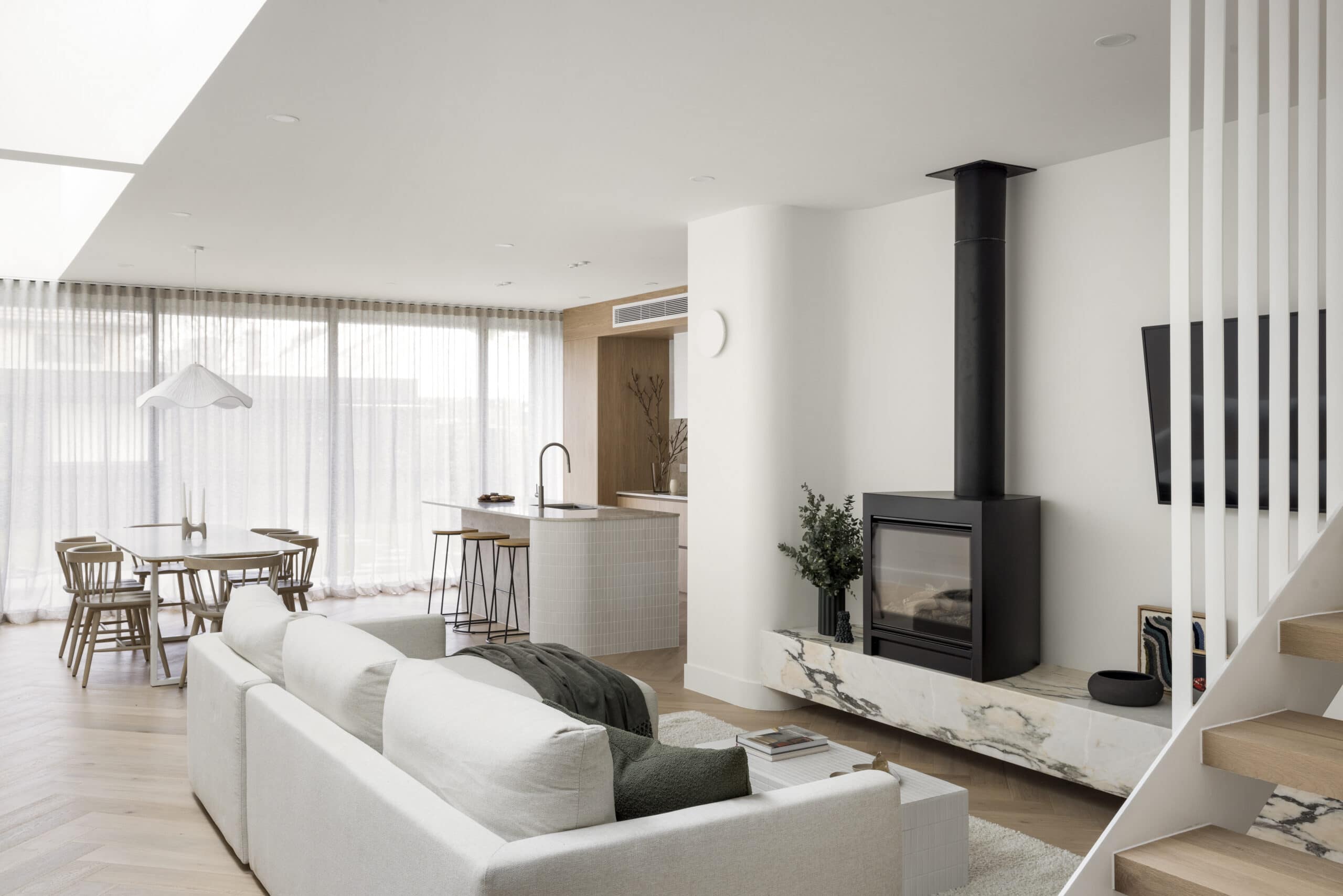
Managing the build costs
Elise’s approach was to obtain quotes for major items such as windows, roofing, plumbing, and electrical work well in advance of starting the build. And for items that offered more flexibility, such as tiles, stone, appliances, and finishes, Elise had a predefined budget allocated and during the selection process for finishes, Elise ensured that she stayed within the allocated budget. If a particular item exceeded the budget in one area, she made corresponding adjustments in other areas to maintain financial equilibrium.
This ensured that they could manage the cost of these items effectively and make choices that aligned with their budget and have a true understanding project’s costs. Elise and Sam also included a contingency in their budget, which provided them with the flexibility to address unexpected costs without derailing the project.
Time investment
Elise emphasized the importance of dedication in the owner-builder process. In her opinion at least one person in the partnership should be prepared to invest a significant amount of time into the project. This commitment might be necessary at various stages, depending on your strengths and skills.
Her experience in commercial construction made her well-suited for the planning, procurement, and permit phases of their project. Her expertise allowed her to dedicate substantial time before the renovation to research, gather quotes, and plan effectively. When construction commenced Sam took the bold step of leaving his job and dedicating six to eight months solely to building their renovation. While this level of commitment might not be realistic for everyone, it highlights the necessity of time dedication for an owner-builder project.
Elise underscores the need for realistic expectations when it comes to pacing progress on the build. To achieve a similar pace to a professional builder, substantial time investment is required. Understanding the project’s scope, your skills, and your available time can help set realistic goals and expectations for your owner-building journey. Sam would often work 12-hour days, seven days a week..
While Sam was the driving force behind the physical work, Elise would contribute labour during weekends, long weekends, and public holidays, especially in the later stages of the renovation. Her involvement allowed them to tackle tasks such as painting and other finishing touches, contributing to the progress of their dream home.
While the journey is long and physical Elise reflects that the daily anticipation of seeing what progress had been made, the thrill of working together on weekends, and the shared moments of achievement made the owner-building journey an unforgettable experience.
Living in the Build, Elise and Sam repurposed an existing workshop in their backyard, transforming it into a one-bedroom studio with an ensuite and kitchenette. This new space became their living quarters during the renovation of their main home.




Friends and Family
Elise and Sam’s home is more than they ever imagined, their home is a source of immense pride and joy. Almost everything within it bears the mark of craftsmanship, with many elements custom-made or handmade by either Elise, Sam, or skilled family members.
Both Elise and Sam’s parents played an active role in the construction of their dream home. Sam’s father, skilled in painting and welding, lent a helping hand with painting and crafting steel balustrades and the staircase. Elise’s parents offered their workshop, complete with a CNC machine, to create custom joinery and special details, such as unique handles.
Sam’s background in residential carpentry also came with valuable connections and he drew upon the expertise of former colleagues and friends. When additional labor or specific skills were needed, these trusted connections stepped in to assist. Their collective effort ensured that challenging tasks.
The Challenges of Owner-Building
Elise reflects on some of the unexpected challenges they faced during their owner-builder journey. One notable challenge was the requirement for additional insurances, including dilapidation surveys and insurance covering public liability and potential damage to neighboring properties. The need for open communication with neighbors and the occasional disruption caused by suppliers or contractors presented additional hurdles.
Elise acknowledges that their journey was not without its share of obstacles, such as the last-minute withdrawal of a roof plumber and a sewer pipe incident. However, her background in the building industry taught her that challenges are an inherent part of the process, with solutions typically requiring either time or financial resources.
Both Elise and Sam emphasize the importance of being solution-oriented rather than getting caught up in minor details. When challenges arise, it’s essential to find alternative solutions, keep the project moving, and maintain positive relationships with the people involved.
Understanding that no build is ever perfect is a valuable mindset for owner-builders. Embracing imperfections, reworks, and changes along the way is part of the construction process, whether it’s due to materials, work quality, or design adjustments.
Elise highlights the advantage of being in control as owner-builders. While it can be challenging, it provides the freedom to make decisions and changes as needed. This contrasts with the experience of having limited control when working with a builder.
Elise and Sam keep a list of lessons learned from their project, aiming to streamline and improve their future projects. They’re open to sharing their experiences and insights with the developer community, showing the value of knowledge sharing and community support.
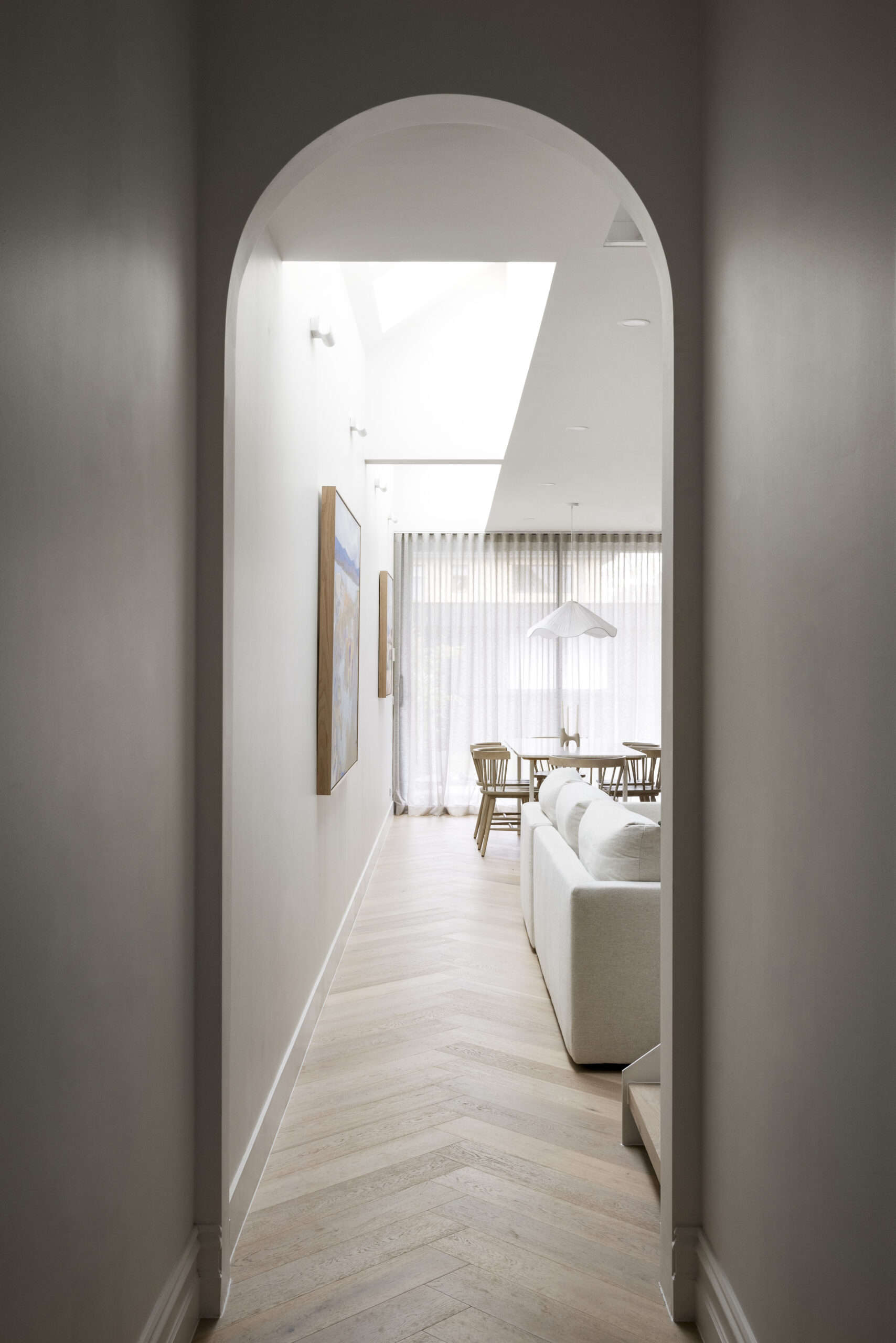

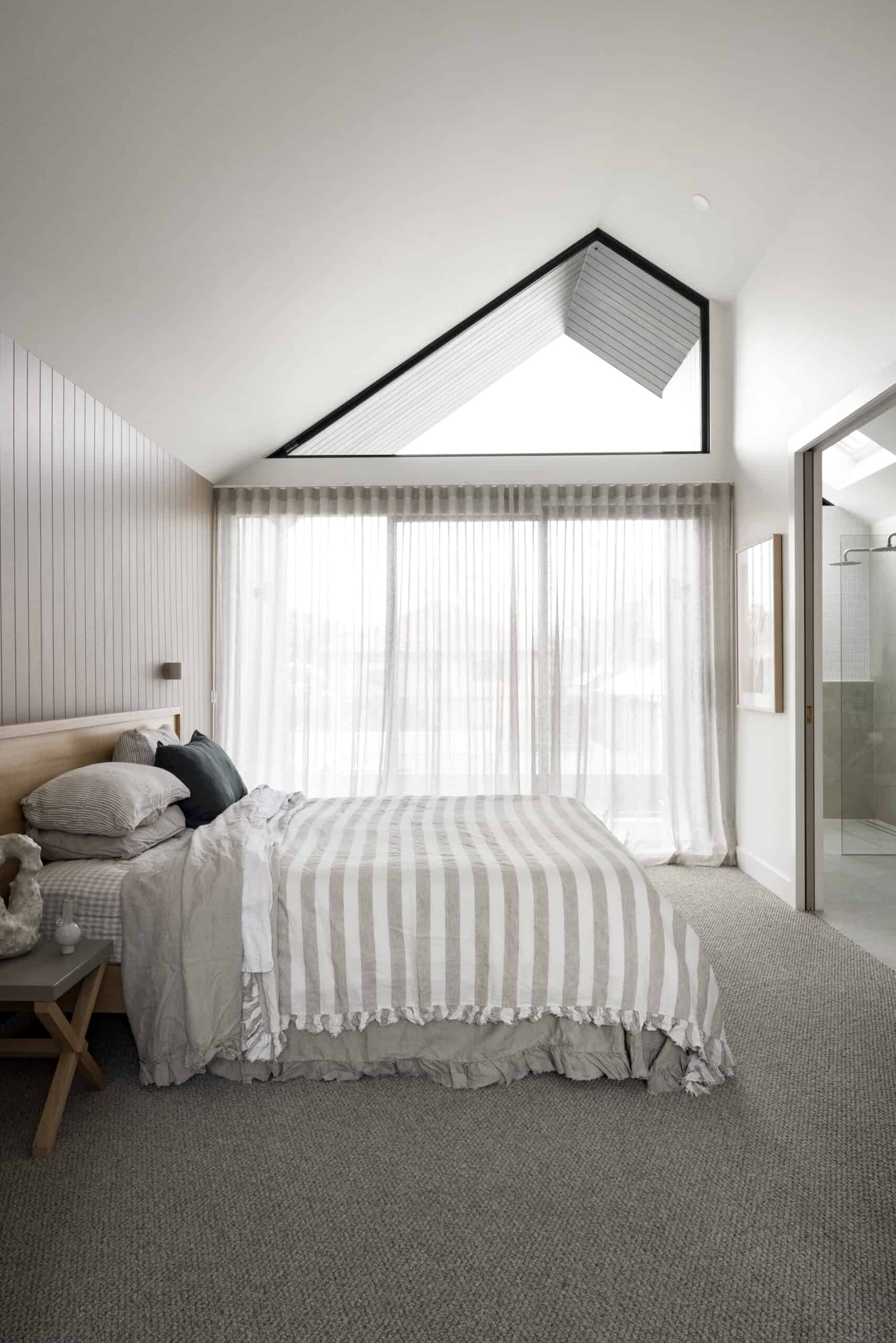
Find Your Tribe & Community Support
Elise is a DevelopHer and a BuildHer which have her access to a community of like-minded individuals, such as the developer community for which she is grateful. Having a network of people who understand your journey and can offer guidance and support is invaluable.
The owner-building journey can be challenging however it is also incredibly rewarding. Embracing the unknown, being solution-oriented, and working with the right team can help you navigate the complexities of construction.

